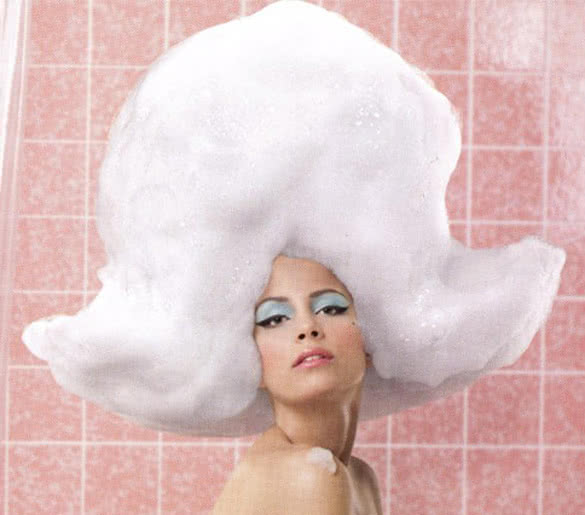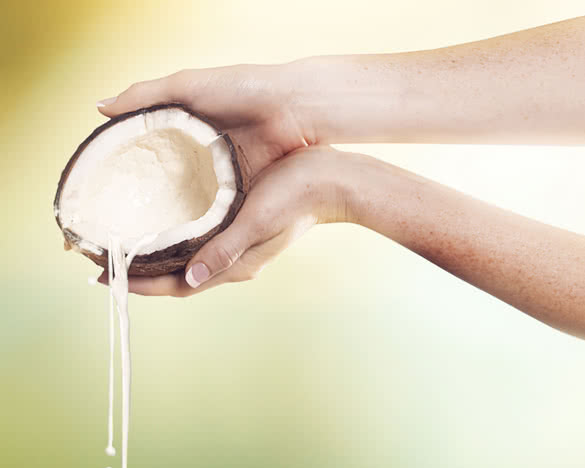Wash… Rinse… Repeat… Toxic chemicals?
On average, we spend 182 days and 12 hours of our lives showering. Holy cow! That is relatively less than what some of us women spend, as this is based on 10 minutes a day with an average lifespan ending at 72. Some of us take 30 or even 45 minute showers and live to be 100 years old. Hmm… Scary.
We spend countless time and money on fancy shampoos and conditioners. Our hair is our glory and we want to keep it lustrous, maintained – and HEALTHY! After all – our hair is protecting the most vital part of our body; our scalp (which protects our BRAIN). Just think about it- 182 days of warm tap-water with pounds of products containing vicious chemicals “sitting” on our sensitive scalps. Scary.
Debate aside, one thing that we can all agree on is the “natural approach” to health. We shop whole-foods and organic. We love free-range meat and going “raw” is all the hype. Gluten-free foods have exploded, and overall, we have become far more conscious about what we “intake” – so why should our shampoos and conditioners be any different? Sure, Herbal Essences promise “herbalness” but lets get real.
So – what’s the deal?
Here are some very common additives in your expensive, fancy “shampoos and conditioners:” (for the green at heart, try not to faint).
- Ammonium Chloride – Chloride? Need I say more? It not only dries out the hair (because it is salt-based and extremely acidic) but according to Wikipedia, “The mineral is commonly formed on burning coal dumps, due to condensation of coal-derived gases.” In addition, “It is the product from the reaction of hydrochloric acid and ammonia.” Sounds great. Apparently, if inhaled, you should contact the poison control center (or the hospital) immediately.
- Sodium Laureth Sulfate – Oh yeah- it’s in almost everything, and it is classified as a “detergent.” This chemical is associated with dangerous carcinogens. It also exacerbates other chemicals.
- Methylchloroisothiazolinone – Sure, it keeps your products “fresh” (isn’t that ironic?) but it also irritates the skin and contributes to problems with the immune system. Cough.
- Propylene Glycol – How do the big brands “moisturize” your hair? They throw in a little dabble of honey and a big dribble of propylene glycol – and bam! Intense moisture… and respiratory and immune disorders. Smooth operator.
Okay. You get the jist. Here are some more “common” ingredients to avoid:
Sodium Lauryl Sulfate, Ammonium Lauryl Sulfate, Ammonium Xylene Sulfonate, TEA Lauryl, Sulfate, Sulfur, Selenium Sulfide, Magnesium Sulfate, Sodium Thiosulfate, Sodium C14-16, Olefin Sulfonate, Alkyl Sodium Sulfate, Alkyl Benzene Sulfonate, TEA-Dodecylbenzene, Sodium C12-15 Alkyl Sulfate and Sodium Dodecyl Sulfonate.
Challenge: Go pick up your products and see how many of these ingredients are in your beloved cleansers and moisturizers. Yikes!!!
Okay – you get the idea. Why are you dieting, exercising, and shopping local when you’re lathering your head with toxic chemicals? Seems a bit ass-backwards.
What should I do?

Yes, you can go out and buy expensive “natural” shampoos and conditioners (and be wary because 99% of these products are not natural). To find a good one, you’ll probably need to hit up a fancy department store or a local grocery/farmer’s market.
But what’s even better? Why – making your own of course! Not only is it a fun project, but you’ll be able to rest assured knowing exactly what you are putting on your precious head. You can also customize your shampoos and conditioners to tailor your needs.
From awesome add-ins to your favorite “smells” – making your own shampoos and conditioners is safer and best of all – cheaper. They also make wonderful gifts, as any woman can appreciate natural products, especially when hand-made by a close friend or relative.
If you have a whole group of friends, consider making small, decorated travel-sized sets with their names on the label. A simple craft store can yield tons of fun ideas.
Making your own shampoo
For the base, you will need:
- ¼ cup natural coconut milk (avoid the kind in the can, try and fid extra virgin if you can)
- 1/3 cup, clear, natural liquid soap (try a health store)
Depending on how dry or course your hair is, feel free to add:
- 1/3 teaspoon of almond or olive oil
- 4 muddled vitamin-e capsules (get rid of the glycerine capsule part) or you can purchase straight-up, vitamin-e oil without the gel capsules. Use about ¼ teaspoon.
Combine all ingredients in a spray bottle; you may need a funnel. Shake well. You can also opt to reuse an old shampoo bottle or a mason jar. If you decide to use a “foam” dispenser, add one cup of distilled water.
Making your own conditioner
Most home-made conditioners use apple-cider vinegar as it’s base. The vinegar detangles the hair and seals the cuticle, while also leveling the hair’s Ph.
- 1 Tablespoon of apple-cider vinegar to one cup of water (ratio 1:1)
You will also need:
- 2 Tablespoons apple cider vinegar
- 1 tablespoon honey
- 2 cups water
Add all ingredients into another container and shake well.
Added extras:
- Favorite essential oils (up to 20 drops)
- Fruit Oils
- Herbs
- A bit of natural sunscreen
- Whole milk
- Honey
- Crushed vitamins (research before adding)
Al Natural
If you have a bit of patience, and you really want to ween off shampoos and conditioners – try going “poo-free.” No- this doesn’t mean not using the restroom; rather shampoo and conditioner-free. It seems odd… but many women are swearing by this simple alternative.
In fact, many are claiming to have the best-looking hair of their life after the transition. It’s always worth a try – and hey, if it doesn’t work, then no harm, no foul.
It will however take some time for your scalp to get used to. Essentially, your hair is used to being constantly stripped of its moisture, so at first, it will naturally be a pain in the arse. This method is generally not recommended for women with thin, fine hair.
Normal shelf shampoos are composed of detergents (yep – the same ingredients in harsh liquid hand-soaps and laundry cleansers), so the scalp will at first try and compensate for the change, which usually means greasy locks. Some women must wait up to three months to experience the max benefits – so don’t be surprised if you don’t look like a million bucks after your first shower.
Shampoo-Free Shampooing and Conditioning

For the shampoo, you will need:
- 3 Tablespoons baking soda and 3 cups distilled water (ratio 1:1)
Mix well in container. Work the soda-water mixture into the scalp and let it sit for a few minutes. Then rinse. Simple as pie.
For the conditioner – again, apple cider vinegar.
- 3 tablespoon apple cider vinegar to 3 cup distilled water (ratio: 1:1)
Mix well.
Many women are saying that after a year or so of being “poo-free”, they are able to ween off all products – relying on just warm water to cleanse the hair. This obviously will take great devotion and patience – but in the end your family (especially if you have kids) will greatly benefit from the natural approach to clean, soft and healthy hair.
It is certainly worth a shot (and when it is so cheap to try it out – why not?) In the end, remember that everything is about “tweaking” – so make your concoction your own tresses brew!
Cover photo: http://angryweb.net/














i wanna go poo-free but my hair gets really sticky! the least i can do is to use conditioner alone,and shampoo only when there is dandruff already.
I think you mean “wean” in two places where you use “ween.”
Wean is to detach from a habit
Ween is archaic for believe.
hie this is a great information i tried this diy shampoo it works great but after a week remaining shampoo in the bottle start smells little bad. plz tell me how long this shampoo last in container
you just said, after a week the remaining shampoo is starting to smell. so i guess it lasts one week at most. try to make small portions every 5-6 days.